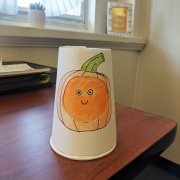Embracing Big Emotions
During early childhood, children begin to learn all about emotions and how to cope with those emotions. When I was teaching, the most common situation I encountered in my classroom was teaching children to cope with big emotions. Big emotions are feelings that swell up and burst in a nanosecond, like an old cartoon water hose with a kink in it. Big emotions can happen when children are struggling with self-regulation, showing intense feelings of anger, frustration, sadness, or anxiety. How can we support children in learning to cope with these emotions? Often times, we may find ourselves wanting to fix everything for the child. We feel bad that they are upset and we want to help them feel better. Doing this can make it harder for the child to develop self-regulation and coping skills. Before teaching your child how to identify and work through big emotions, make sure you check in with yourself. Practicing and modeling self-regulation is a great way to teach children this skill. You can talk through self-regulation with your child and show them that you have emotions too, let’s work through it together. If you observe your child developing a big emotion, help them identify what they’re feeling. Support your child by saying phrases like “I know this is hard and I’m here for you” and “I see you’re feeling sad (or bored, or disappointed, etc.) and it’s going to be okay.” This is a good opportunity to show your child how to work through this emotion. For example, your child may be frustrated at the grocery store because they want a snack and maybe you told them no. If you have helped your child identify they are frustrated, give them appropriate strategies to work through the emotion. You can tell them what is and is not appropriate. This will help them develop self-regulation. Big emotions can be challenging but they provide a great teachable moment for developing self-regulation.






Leave a Reply
Want to join the discussion?Feel free to contribute!